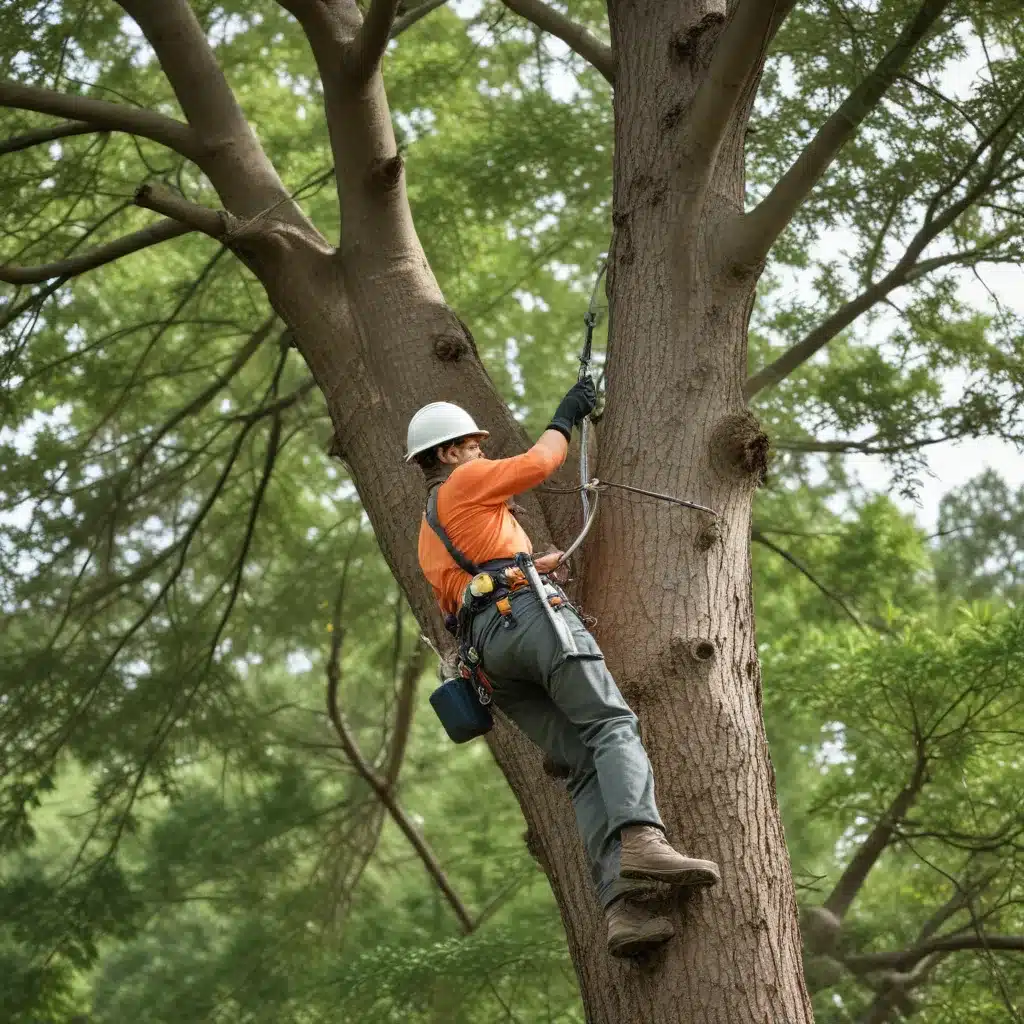
As tree care specialists at TriCounty Tree Care, we recognize the profound importance of aligning our practices with the rhythms of the natural world. Seasonal considerations are crucial in cultivating the health and vitality of the trees that grace our landscapes. By attuning ourselves to the dormancy cycles and environmental cues that guide a tree’s growth, we can develop a holistic, ecologically-minded approach to arboricultural stewardship.
Seasonal Tree Care Fundamentals
The ebb and flow of the seasons profoundly shape a tree’s physiological processes. During the dormant winter months, trees enter a state of quiescence, suspending active growth to conserve energy and withstand the harsher conditions. As spring arrives, the tree awakens, directing its resources towards bud break, leaf expansion, and the initiation of new growth. Summer brings a period of active photosynthesis and structural development, while autumn ushers in the senescence of foliage and preparation for winter’s rest.
Understanding these cyclical patterns is essential for implementing timely and effective care practices. Performing tasks like pruning, fertilization, or pest management at the wrong time can disrupt a tree’s natural rhythms, potentially causing harm or stunting its growth. By aligning our interventions with the appropriate seasonal cues, we can support the tree’s innate resilience and optimize its long-term health.
Spring Tree Care
As winter’s grip loosens and the days grow longer, trees begin to emerge from dormancy. This is the ideal time to assess the tree’s structure and address any necessary pruning or trimming. Removing dead, damaged, or conflicting branches during the pre-bud break period minimizes the tree’s stress response and promotes the development of a strong, balanced framework.
Concurrent with pruning, the spring season also presents an opportunity to evaluate and amend the soil conditions around the tree’s root zone. Replenishing organic matter, adjusting pH levels, and addressing any compaction or drainage issues can greatly enhance the tree’s access to the essential nutrients and water it requires for vigorous growth.
Summer Tree Maintenance
As the tree enters its most active growth phase, consistent watering and hydration become paramount. Monitoring soil moisture levels and providing supplemental irrigation during periods of drought or high temperatures can help prevent water stress and maintain the tree’s turgor pressure, supporting photosynthesis and overall vigor.
Vigilant disease and pest monitoring is also crucial during the summer months. Identifying and addressing any emerging threats, such as fungal infections or insect infestations, can mitigate the risk of significant damage and ensure the tree’s continued health.
Autumn Tree Care
As daylight hours wane and temperatures cool, trees begin to prepare for dormancy. This is an ideal time to address the accumulation of leaf litter and other organic matter around the base of the tree. Carefully removing this material can help prevent the development of disease-causing fungi and maintain the root zone’s aeration and drainage.
Protecting the tree’s root system is also a priority in the autumn. Applying a layer of organic mulch or compost around the drip line can insulate the roots from the impending frost and fluctuations in soil temperature, helping the tree weather the winter months with greater resilience.
Environmental Factors Influencing Tree Health
Beyond the rhythms of the seasons, a tree’s well-being is profoundly shaped by its environmental context. Factors such as climate, microclimate, and soil composition can significantly impact a tree’s ability to thrive.
Trees have evolved adaptations to specific regional climates, allowing them to effectively manage factors like temperature, precipitation, and wind. Introducing species that are ill-suited to the local conditions can lead to stress and reduced longevity. Careful selection of regionally appropriate tree cultivars is essential for ensuring their long-term success.
Similarly, the soil characteristics of a given site can greatly influence a tree’s access to essential nutrients and water. Ensuring adequate drainage, pH balance, and organic matter content can help support the tree’s root system and overall vitality.
Sustainable Practices
Embracing a holistic, ecologically-minded approach to tree care is not only beneficial for the individual trees but also contributes to the broader environmental health of the landscape. Strategies such as organic matter replenishment and integrated pest management can enhance soil fertility, support biodiversity, and minimize the reliance on synthetic inputs.
By leveraging the power of natural processes, we can cultivate thriving, resilient trees that are better equipped to withstand environmental stresses and contribute to the overall ecological balance of the urban or suburban landscape.
Tree Species Considerations
The selection of appropriate tree species is a critical component of effective seasonal care. While native species are often well-suited to the local environmental conditions, introduced cultivars can also play an important role in diversifying the landscape and providing unique aesthetic or functional attributes.
When evaluating tree species, it is essential to consider factors such as growth habits, mature size, and adaptability to the specific site characteristics. Choosing the right tree for the right place can help ensure its long-term success and minimize the need for intensive management interventions.
Holistic Landscape Design
Beyond the individual tree, a comprehensive approach to seasonal care must also consider the broader landscape context. Integrating trees with other complementary plant species can create a harmonious, ecologically-balanced ecosystem that supports diverse wildlife and enhances the overall aesthetic appeal of the outdoor space.
By strategically positioning trees within the landscape, we can leverage their ability to provide shade, wind protection, and stormwater management, while also enhancing the habitat value for local fauna. This holistic perspective on tree care aligns with the mission of TriCounty Tree Care to promote the long-term health and sustainability of the urban and suburban canopy.
Embracing nature’s cues and aligning our tree care practices with the rhythms of the seasons is a fundamental tenet of our approach at TriCounty Tree Care. By cultivating a deep understanding of the physiological processes and environmental factors that shape a tree’s well-being, we can develop customized strategies that support the long-term vitality of the trees entrusted to our care. Visit TriCounty Tree Care to learn more about our comprehensive services and our commitment to sustainable, ecologically-informed arboriculture.


